#irrigation projects in india
Explore tagged Tumblr posts
Text
Smart Irrigation Systems using IoT And How Do They Work? Digicane Systems
Monitor Your Irrigation System with Tablet
Reduced water consumption is one of the best ways to combat climate change-related water shortages. However, it can be challenging during droughts or for growers who use conventional irrigation systems as they do not have a precise way to measure and control their water usage.
Smart Irrigation Systems using IoT allow growers to track and optimize water consumption. This ensures that you do not waste water, or give it away in excess. This article describes Smart Irrigation Systems using IoT, their working, and how they help to address water shortages.

What Is A Smart Irrigation System?
You can integrate Smart Watering Systems using IoT into your existing irrigation system. They monitor, analyze and automate your water usage, reducing waste, detecting leaks and alerting you to any potential problems.
Instead of relying on manual watering methods, you can create an irrigation schedule based on the real-time requirements of your plants by using a smart watering system that is connected to all water related operations. This reduces runoff, erosion and evaporation, which helps to conserve water.
Smart Irrigation Systems using IoT: How They Work
In traditional irrigation, the grower manually opens and closes valves when needed. Smart water technology uses smart water valves that are embedded in your drip irrigation system to track water usage and allow you to control it remotely.
A smart water control valve has a valve controller and flow meter. It also contains wireless connectivity and power. The smart water valve collects data from flowmeters that measure the flow of water through your irrigation system. The smart valve then transmits this information via wireless to a cloud-managed software platform. You can then access the data from your computer or phone at anytime and anywhere.

Smart Water Technology: Resist Water Shortages
Growers can take proactive measures to reduce their impact on the environment while we are working to reduce our carbon footprint by using methods like efficient transport and renewable energies. Smart water technology helps to avoid water shortages in several ways.
Leak Detection
A leaking irrigation system can cost up to 6,300 gallons per month. Leaks of this nature can have a negative impact on your water supply, and you may even lose water during times of drought. Leaks are the easiest way to reduce water consumption and monitor your supply.
The technology of leak detection gives you instant access to your most precious resource. It is possible to reduce water consumption on a farm without having to pay large upfront costs or shut down maintenance processes.
Measurement
Good data is the key to smart irrigation decisions. You can improve your water management by making sure that your irrigation system is equipped with smart sensors and controls.
Smart sensors in real-time allow you to determine the amount of water being used and where. Smart irrigation technology allows growers to be aware of how much water their crops have received. This gives them full visibility to where their water has been used, so they can take proactive measures to address any unplanned deviations in their irrigation schedules.
You can also find out more about the Automated Vehicles by clicking here.
Although irrigation timers and controllers are not a new idea, their cost, complexity and reliability have prevented them from being widely adopted. Automation is now much easier to use and more affordable with modern systems. You will never again overwater your plants by automating your irrigation. The valves will automatically shut off once the exact volume has been reached. You'll also save labor costs, since you won't have to hire someone to oversee and operate each valve.
For crops such as almonds, strawberries and wine grapes where water conservation is a major challenge, improved irrigation management can save up to 20 percent of the total water consumed.
Harnessing Real-Time Data
Growers need to be able to analyze data in real-time. There are a number of data solutions available to determine the optimal water schedule for crops, such as:
Soil Moisture Sensors
Plant Sensors And Pressure Chambers
Weather Stations
Satellite Imagery
Smart Watering Systems based on IoT often integrate these external data sources so that growers can create and manage their irrigation schedules in a single dashboard, and make adjustments easily, without having to jump from app-to-app.
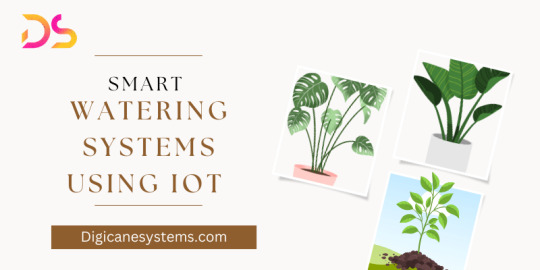
Preventive Maintenance
Smart irrigation technology detects problems by automatically monitoring water pressure and flow. You'll be able to detect problems before they turn into costly or dangerous situations. Leaks and clogs are the main causes of water waste in farming.
Sensor technology, data and automation allow growers to optimize irrigation to a new level. All these factors working together in harmony allows you to distribute water where it is needed and prevent waste.
Smart Irrigation Systems using IoT not only save growers time and money but can also reduce the amount water required for their crops while still achieving the same or better results.
How To Get Started With Modern Solution
Conserving water is essential for reducing the impact of climate change. Using water more efficiently is one way to achieve this. Smart Irrigation Systems using IoT allow growers to use less water for irrigation without risking their crops or livelihoods. We believe that conserving natural resources requires every drop to be counted. We have created a smart irrigation solution that allows you to automate your water use and track it in a simple way. Call us to find out how we can make irrigation easier and more efficient.
#smart irrigation system#smart irrigation system based on IoT#Smart irrigation system using IoT ppt#Smart watering system using IoT in india#Smart watering system using IoT pdf#Smart watering system using IoT project#Smart Watering systems based on IoT#Smart Watering systems with IoT#Smart Watering Systems using IoT#Smart watering system using IoT project report pdf#Smart watering system using IoT project report
0 notes
Text
Asia's Largest Lift Irrigation Project: Tembhu Lift Irrigation (Takari & Mhaisal)
Know about Asia's largest irrigation project
Introduction The Tembhu Lift Irrigation Project is a water management and irrigation project located in the Satara district of Maharashtra, India. The project is designed to provide irrigation water to the agricultural land in the district, especially in drought-prone areas. The project also provides drinking water to nearby villages. The project consists of two sub-projects – the Mhaisal Lift…

View On WordPress
#Asia&039;s Largest Lift Irrigation Project: Tembhu Lift Irrigation#Geography#india irrigation project#irrigation project#Maharashtra irrigation project#mhaisal irrigation project#takari lift irrigation#Tembhu - Chack and Outlet Planning#Tembhu - Design of PDN#tembhu irrigation project
0 notes
Text
Sustainable changes
Nicolas had just been promoted to Senior Product Manager. But the condition was that he had to take a foreign assignment for two years. He had reckoned with Germany, the USA or maybe Japan. India would also have been okay. But he was supposed to go to Turkmenistan. His employer had just bought a large agricultural cooperative there, which was now to be converted in the direction of ecological and sustainable agriculture. On the one hand, this sounded like a completely unknown field of work. Nicolas had previously worked more in the consumer goods sector. On the other hand, anything that bore the label "sustainable" was naturally a career driver at the moment. So he took a cautiously optimistic approach.
Once Nicolas arrived at his new workplace, the optimism quickly evaporated. He had arrived somewhere in the middle of nowhere. There was no office building, there were only barracks. Mostly not air-conditioned. He had expected to be put up in some hotel. But he had been given a room with a farmer. Toilet in the yard. Bathroom was an outdoor shower served from the cistern. He felt infinitely silly in his outfit.

In the first service meeting, a colleague asked him if they could tweak Nicolas's resume a bit for the presentation to the workers. It might be good for his credibility if they could give him some local roots. Nicolas was tired. The trip had been exhausting. He remembered his parents' Russian gardener. A picture of a man. Former combat swimmer. And of the Turkish cook. So he answered, one may mix in there with pleasure something Russian and Turkish. The main thing was that he was allowed to retire now.
The night had been hell. It smelled like a pigsty in his room. And he could hear the pigs too, as if they were sleeping in bed with him. There was no hot water to shave with. And company policy forbids the use of shower gels containing microplastics without functioning wastewater treatment for environmental reasons. So all he can use is a bar of curd soap. When introduced to the staff, he looks appropriately a bit bedraggled. One of his colleagues asks Nicolas to say something in Russian. He has to think a bit. His grandmother sometimes spoke to him in Russian. But it's enough for a "I'm happy to be here and look forward to working with you. The employees cheer for their new boss.
Before Nicolas takes a shower the next morning, he drives the pigs out of the barn. If he's going to share the roof with them, he might as well make himself useful. His hosts invite him to breakfast. The conversation in Russian is still a bit bumpy. Nikolai hasn't spoken his father's language for years. And his host family, of course, actually speaks Turkmen. But with hands and feet it works. And so it goes on in the office. The team meeting was supposed to take place in English. But the interpreter dropped out. With every hour it gets better. The memory of his father's language comes back.
At breakfast, Nikolai realizes that he understands Turkmen better than he thought. It definitely works out that his hosts ask him in their native language. But he prefers to answer in Russian. Nikolai speaks it again as fluently as he did when he lived with his father in the Sevastopol army barracks. At work, they discuss the tasks for the next few days. Nikolai considers the projects for preventing soil erosion and unused surface water runoff to be urgent. Everyone passionately discusses the possibilities of transforming agriculture to get by without artificial irrigation. But Nikolai realizes that it will be difficult to irrigate only naturally in the desert.
The next morning, Nikolai surprises your host family with a few words of Turkmen. With his fluency in Russian and Turkish as his mother's language, it's not that hard for him to learn the language. On the job, they speak almost only Turkmen anyway. Today, his job is to drive the fields and inspect and document the environmental damage. Nikolai doesn't even need to shower for that. It will be hot anyway. And air conditioning is only for wimps. The point is to save energy wherever possible. In the afternoon, he gets a call from headquarters. They are very pleased with his work on site. It is clear that the project would not make an economic contribution. But the advertising impact is enormous. Whether he is interested in accepting a junior director position at the headquarters in Paris.

Nikolai turns his camera, bares his left breast and says in broken French that his heart beats for his new home. He won't leave until the desert blooms again.
579 notes
·
View notes
Text
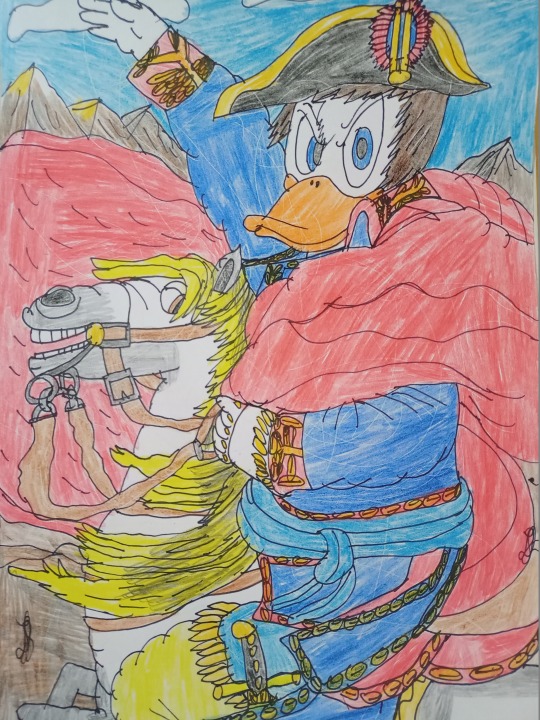
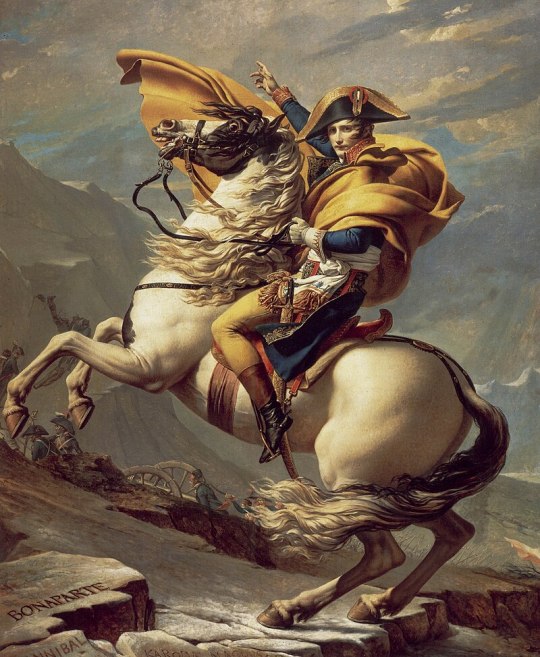

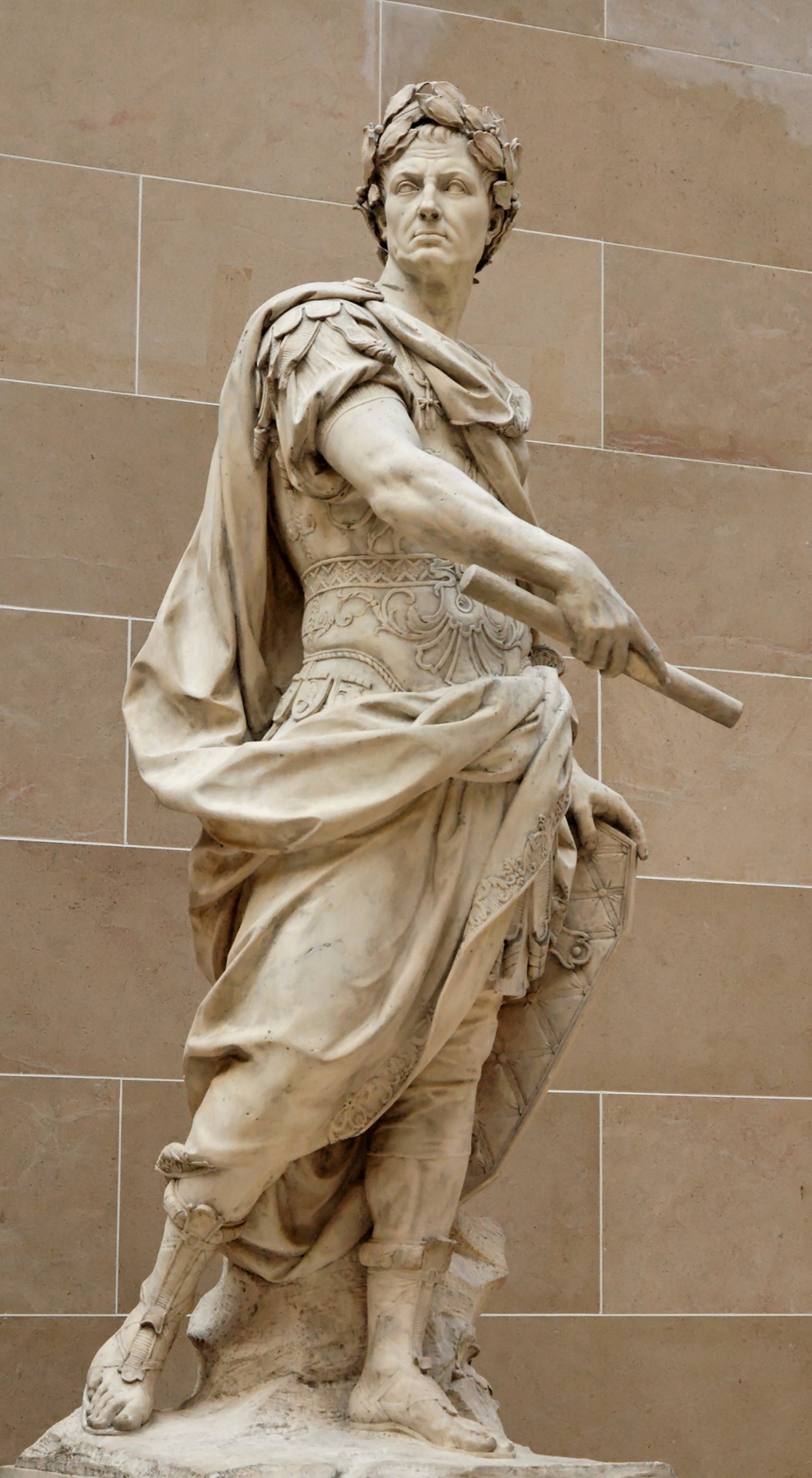

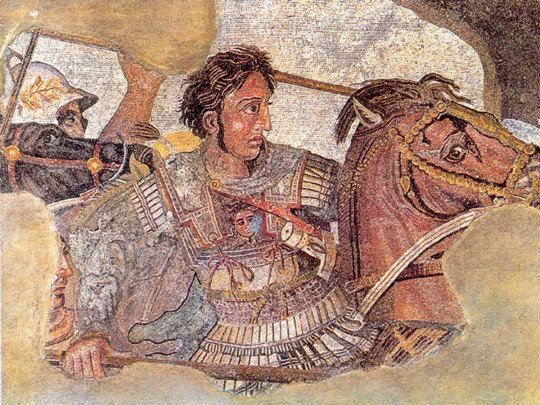



Donald Duck as Napoleon Bonaparte, Scrooge McDuck as Gaius Julius Caesar and Louie Duck (Quack Pack) as Alexander the Great - Conquerors - Real Ducks in History - History in Duckverse
I've always wanted to do a special project called Duckverse in History and my plan is to draw my favorite characters as redraws from famous works of art as well as famous historical figures. And since history is my favorite science, and my favorite field, I definitely wanted to do something related to it and related to one of my favorite historical characters. Since I don't want to complicate the situation, I will gradually publish a drawing related to that historical figure from time to time. I started this last year for Duckvember only to finish at the end of last month.
The first drawing is a redraw from Jacques Louis David's famous early 19th century artwork depicting Napoleon Bonaparte crossing the Alps in 1800 before the Battle of Marengo. Napoleon Bonaparte was the most famous French military leader, general, consul and emperor who waged war with all of Europe at the time and managed to subjugate it in its entirety except for the Ottoman Empire, Russia and Great Britain. He is from Corsica, but he left a lot for France and proved that France is not worth messing with easily. He also gave many reforms and his Civil Code which spread throughout Europe and brought order in France after the French Revolution. Napoleon's nature is very similar to Donald Duck and I drew Donald as Napoleon since he was created for that role and I drew him riding his horse Marengo in my own style, but in a realistic way and that Donald has five fingers.
The second drawing is a redraw of a statue made by Nicolas Coustou at the end of the 17th century for the decoration of Versailles, which depicts the greatest Roman, Gaius Julius Caesar. Although he was not an emperor, certainly many presented him, but he was a dictator, consul, general, writer, historian, engineer, constructor, and a great military leader who changed the Roman Republic into an almost Roman Empire. His fights against the Gauls, as well as the conflict with Pompey and his love with Cleopatra, are known, but he also changed a lot in Rome and was extremely rich. And he lived during the first century BC. That's why I drew Scrooge McDuck as Gaius Julius Caesar since Scrooge is a great leader and he also strived for fame and fortune and to be remembered in the future and he plays the role of the best Roman. Behind it are the Colosseum (built a century after him), the aqueduct (then irrigation) and the Pantheon (built two centuries after him), as well as a Roman temple that symbolizes Rome at that time, as well as the roads themselves. In addition, Topolino (Italian comics) are showed Scrooge as Caesar two or three times so that's where my inspiration came from.
The third drawing shows Louie Duck (the Quack Pack version, not the Ducktales reboot) shows Alexander the Great, another brilliant conqueror from the fourth century BC and I drew it as a redraw from the mosaic of Alexander the Great from the battle of Issus in which he confronts the Persian king Darius III from Pompeii, probably from the first century BC. Alexander the Great was the son of Philip II and the king of Macedonia who united Greece and fought against Persia and managed to conquer an entire empire in his twenties. He traveled through the Persian Empire and reached India and wanted to continue, but his soldiers did not want to continue, so he returned to Babylon, his new capital. He certainly changed the world at that time and introduced a new culture, called Hellenism, as a combination of ancient Greek culture and the culture of the Ancient East and ancient India. I drew Louie as Alexander because as a young man he is a great adventurer and rides his black horse Bucephalus and is eager for extremes, yet unlike Alexander, Louie shows a bit of his shyness, but is still brave enough to take on new challenges. I also added a helmet as worn by Alexander III in his time. Behind Louie are the pyramids from Egypt, the Ishtar Gate from Babylon and the imperial palace from Persepolis where the Persian rulers lived and it actually shows the lands that Alexander the Great conquered.
I certainly hope you like these drawings and these ideas and that these characters have such historical roles. Of course, Duckverse in history I combine mostly everything related to Duckverse (Donald Duck comics, OG Ducktales, Three Caballeros, Darkwing Duck and Quack Pack) and it's mostly my version and my idea. By all means if you like this and support these ideas, feel free to like and reblog this, but please don't use these same ideas without mentioning me and without my permission. Thank you!
#my fanarts#traditional art#artists on tumblr#donald duck#history#duckverse#ducktales#napoleon bonaparte#gaius julius caesar#alexander the great#scrooge mcduck#louie duck#quack pack#disney ducks#duckverse in history#disney duck comics#rome#france#topolino#greece#disney duckverse#quack pack au#art#my redraws#the conquerors#my fanart#comics#cartoons#my style#julius ceaser
36 notes
·
View notes
Text
Scientific knowledge and technology played a significant role in the expansion of colonial rule in India and the consequent incorporation of the Indian sub-continent into the [commercialized, imperial] world-system [...]. The colonization of nature, territory and people in British India led to a mutually constitutive interplay [...].
By the time the East India Company managed to establish a foothold in Bengal in 1757, [...] [a]fter the acquisition of the formal rights to collect revenues in the states of Bengal, Bihar and Orissa, the issue of obtaining accurate information about the extent of the produce, the population and other social statistics assumed significance. The detailed scientific surveys [...] were possible due to the large number of amateur scientists employed by the Company. Over time, these surveys played a major role in the transformation of a trading company into a colonial state [...] and the incorporation of India into the modern world-system. [...]
---
Considered the founder of British geography, James Rennell arrived in India in 1760 barely three years after the decisive battle of Plassey. Rennell’s cartographic skills caught the attention of the governor of Bengal presidency, who was ‘anxious to inaugurate some system for correcting and revising the geography of Bengal’ [...]. Rennell’s mapping out in great detail the area under the Company was indispensable for the rationalization of the extraction of surplus, administrative strategies and techniques of control. [...] In 1777 he left for England, and two years later he published the Bengal Atlas that led to his election to the Royal Society. [...] With reference to the ‘science wars’, [...] Rennell’s work was also incorporated in the key text[s] of the time, C. Lyell’s Principles of Geology (1830) [...] [and] the work of [...] Humboldt and Carl Ritter. Rennell’s surveys contributed to the organized [...] surveys [across wider regions of India] that followed after the defeat of Tipu Sultan of Mysore in 1799. [...] [Mysore's] sustained resistance to British power had a major impact on the general consciousness in Britain. [...]
Thomas de Quincey extolled the virtues of the ‘British bulldog’ against [...] the tyrannical ‘Bengal tiger’ [...]. The scientific knowledge that emerged as a consequence of the surveys of Mysore contributed [...] to the consolidation of administrative power [...]. The key figures associated with the surveys [included] Colin Mackenzie [...]. Mackenzie’s ethnographic notes contributed to imperial perceptions of the [...] [people of South Asia] and the grid of anthropological knowledge through which administrative power was deployed. [...]
---
Nature, culture and colonial power were inextricably implicated in the production of scientific knowledge and of colonial society. [...] The establishment the Public Works Department in 1854 provided fresh impetus for the deployment of science and technology in grappling with problems precipitated by colonial rule. Declining revenues for the Company focused attention on gigantic irrigation and other public works projects. [...]
The irrigation projects were expanded to include the railways (1849), the telegraph (1852), and the postal system (1850). Together, they represented the largest state-sponsored enterprise undertaken anywhere at that time. Lord Dalhousie, under whose tenure these projects were inaugurated, declared the railways, the telegraph and the postal system as the ‘three great engines of social improvement’.
His predecessor William Bentinck had already termed the railways ‘the great engine of moral improvement’ in a country ‘cursed from one end to the other by the vice, the ignorance, [...] the barbarous and cruel customs that have been the growth of ages under every description of Asian misrule’ [...]. Later observers were to wax ever more eloquent on the role of the railways in the modernization of India. For W. A. Rogers of the Indian Civil Service, railways ‘are opening the eyes of the people … they teach them that speed attained is time, and therefore money, saved or made’ (Adas1989: 226). The importance of a network of railways, connecting the cotton plantations of the Deccan region to the ports became significant especially during the 'cotton famine' of 1846 [...].
---
Almost immediately after Dalhousie left India, secure in the belief that the double engines of moral improvement and legitimacy were at work, the rebellion of 1857 put an end to such expectations. The rebellion was partly triggered in response to the wide-ranging transformations [...] triggered off by the introduction of [these] new [colonial infrastructures] [...].
In the end, the rebellion was violently suppressed by the very technologies that had precipitated it in the first place. [...]
---
All text above by: Zaheer Baber. "Colonizing nature: scientific knowledge, colonial power and the incorporation of India into the modern world-system". British Journal of Sociology 52(1), pages 37-58. April 2001. [Bold emphasis and some paragraph breaks/contractions added by me. Presented here for commentary, teaching, criticism purposes.]
#ecology#abolition#multispecies#landscape#geography#temporal#temporality#colonial#imperial#tidalectics#indigenous#archipelagic thinking#intimacies of four continents#plantations#carceral geography#opacity and fugitivity
38 notes
·
View notes
Text
More than a millennium before Ferdinand Magellan landed in the archipelago that he called Filipinas, the islands were filled with thriving communities, ruled by their respective datu (rulers). They have sophisticated pottery and artifacts developed from trading with the surrounding civilizations in this part of the world. There was no extensive documentation on these cultures because of the lack of a permanent source of writing material, but one thing is certain—they are exceptional goldsmiths.
One day in April 1981, a local named Edilberto Morales working with heavy machinery for an irrigation project in the province of Surigao del Sur found what turned out to be 22 pounds of gold artifacts. Morales quietly took home his stash on a rice sack and covered them with bananas. He wasn't sure what to do with the artifacts, so he entrusted them to the local priest. As words of the discovery got out, buyers and looters flocked to the village. Before long, the treasure was gone.
Fortunately, most of them made their way to the few buyers who could afford to buy them—the Central Bank and prominent people in the capital.
The items dated back to the 10th through the 13th centuries. The most prominent artifact is a sash made of 3,860 grams of gold. This piece was likely worn by an important datu during key rituals. The sash is made of tightly braided gold wires and beads woven to assemble a four-cornered halter with a slit on one end, perhaps to hold a ceremonial weapon.
It was likely made for ceremonial purposes, but no one can be sure. Similar golden regalia have been used by the Brahmin caste in India.
29 notes
·
View notes
Text

The study of Earth's axis shift due to excessive groundwater pumping highlights a troubling trend. Between 1993 and 2010, humans pumped over two trillion tons of groundwater, redistributing mass to oceans and causing Earth's axis to drift by approximately 2.6 feet. This phenomenon is a result of changes in the planet's mass distribution caused by human activity, particularly in mid-latitude regions such as the U.S. and India. While this drift doesn't affect the length of days or seasons, it exemplifies how significant human actions are in altering planetary mechanics. Groundwater extraction also contributes to sea-level rise and intensifies climate challenges.
Over the next 50 years, if unsustainable water use continues alongside rising global temperatures, humanity may face worsening resource scarcity, higher sea levels, and increased geopolitical tensions over water. Groundwater overuse can exacerbate droughts and agricultural losses, undermining food security globally.
Recommendations for Change
1. Adopt Sustainable Water Management:
Shift to more efficient irrigation systems and crop choices.
Invest in wastewater recycling and groundwater replenishment projects.
Implement stricter regulations to prevent over-extraction.
2. Global Collaboration:
Establish international agreements to manage shared water resources equitably.
Increase funding for water conservation in developing nations.
3. Climate Mitigation:
Reduce greenhouse gas emissions to slow the melting of glaciers and rising sea levels, which compound the effects of water mismanagement.
Support innovation in clean energy to reduce stress on water-dependent fossil fuel processes.
4. Awareness and Education:
Promote understanding of water's value and the consequences of overuse.
Encourage local and community-driven initiatives to conserve water.
5. Advance Geoengineering Research:
Explore sustainable ways to reverse or mitigate the impacts of human-induced environmental changes, such as artificial groundwater recharge or solar radiation management.
By taking immediate and collective action, humanity can mitigate the potentially catastrophic consequences of water mismanagement and ensure a more sustainable future.
#canada#canadian politics#ontario#british columbia#share#life#usa#usa politics#elon musk#earth#environment#beautiful planet#planetary science#space#scientificresearch#science#humanity#europe#india#china
4 notes
·
View notes
Text

Chapter 3. Economy
What about building and organizing large, spread-out infrastructure?
Many Western history books assert that centralized government arose out of the need to build and maintain large infrastructure projects, especially irrigation. However, this assertion is based on the assumption that societies need to grow, and that they cannot choose to limit their scale to avoid centralization — an assumption that has been discredited many times over. And while large-scale irrigation projects do require some amount of coordination, centralization is only one form of coordination.
In India and East Africa, local societies built massive irrigation networks that were managed without government or centralization. In the Taita Hills region of what is now Kenya, people created complex irrigation systems that lasted hundreds of years, often until colonial agricultural practices ended them. Households shared day-to-day maintenance, each responsible for the closest section of the irrigation infrastructure, which was common property. Another custom brought people together periodically for major repairs: known as “harambee labor,” it was a form of collective, socially motivated work, similar to traditions in many other decentralized societies. The people of the Taita Hills ensured fair use through a number of social arrangements passed on by tradition, which determined how much water each household could take; those who violated these practices faced sanctions from the rest of the community.
When the British colonized the region, they assumed they knew better than the locals and set up a new irrigation system — geared, of course, to cash crop production — based on their engineering expertise and mechanical power. During the drought of the 1960s, the British system failed spectacularly and many locals returned to the indigenous irrigation system to feed themselves. According to one ethnologist, “East African irrigation works seem to have been more extensive and better managed during the precolonial era.”[48]
During the Spanish Civil War, workers in occupied factories coordinated an entire wartime economy. Anarchist organizations that had been instrumental in bringing about the revolution, namely the CNT labor union, often provided the foundations for the new society. Especially in the industrial city of Barcelona, the CNT lent the structure for running a worker-controlled economy — a task for which it had been preparing years in advance. Each factory organized itself with its own chosen technical and administrative workers; factories in the same industry in every locality organized into the Local Federation of their particular industry; all the Local Federations of a locality organized themselves into a Local Economic Council “in which all the centers of production and services were represented”; and the local Federations and Councils organized into parallel National Federations of Industry and National Economic Federations.[49]
The Barcelona congress of all Catalan collectives, on August 28, 1937, provides an example of their coordinating activities and decisions. The collectivized shoe factories needed 2 million pesetas credit. Because of a shortage of leather, they had to cut down on hours, though they still paid all their workers full time salaries. The Economic Council studied the situation, and reported that there was no surplus of shoes. The congress agreed to grant credit to purchase leather and to modernize the factories in order to lower the prices of the shoes. Later, the Economic Council outlined plans to build an aluminum factory, which was necessary for the war effort. They had located available materials, secured the cooperation of chemists, engineers, and technicians, and decided to raise the money through the collectives. The congress also decided to mitigate urban unemployment by working out a plan with agricultural workers to bring new areas into cultivation with the help of unemployed workers from the cities.
In Valencia, the CNT organized the orange industry, with 270 committees in different towns and villages for growing, purchasing, packing, and exporting; in the process, they got rid of several thousand middlemen. In Laredo, the fishing industry was collectivized — workers expropriated the ships, cut out the middlemen who took all the profit, and used those profits to improve the ships and other equipment or to pay themselves. Catalunya’s textile industry employed 250,000 workers in scores of factories. During collectivization, they got rid of high-paid directors, increased their wages by 15%, reduced their hours from 60 to 40 hours per week, bought new machinery, and elected management committees.
In Catalunya, libertarian workers showed impressive results in maintaining the complex infrastructure of the industrial society they had taken over. The workers who had always been responsible for these jobs proved themselves capable of carrying on and even improving their work in the absence of bosses. “Without waiting for orders from anyone, the workers restored normal telephone service within three days [after heavy street fighting ended]... Once this crucial emergency work was finished a general membership meeting of telephone workers decided to collectivize the telephone system.”[50] The workers voted to raise the salaries of the lowest paid members. The gas, water, and electricity services were also collectivized. The collective managing water lowered rates by 50% and was still able to contribute large amounts of money to the anti-fascist militia committee. The railway workers collectivized the railroads, and where technicians in the railroads had fled, experienced workers were chosen as replacements. The replacements proved adequate despite their lack of formal schooling, because they had learned through the experience of working together with the technicians to maintain the lines.
Municipal transportation workers in Barcelona — 6,500 out of 7,000 of whom were members of the CNT — saved considerable money by kicking out the overpaid directors and other unnecessary managers. They then reduced their hours to 40 per week, raised their wages between 60% (for the lowest income bracket) and 10% (for the highest income bracket), and helped out the entire population by lowering fares and giving free rides to schoolchildren and wounded militia members. They repaired damaged equipment and streets, cleared barricades, got the transportation system running again just five days after fighting ceased in Barcelona, and deployed a fleet of 700 trolleys — up from the 600 on the streets before the revolution — repainted red and black. As for their organization:
the various trades coordinated and organized their work into one industrial union of all the transport workers. Each section was administered by an engineer designated by the union and a worker delegated by the general membership. The delegations of the various sections coordinated operations in a given area. While the sections met separately to conduct their own specific operations, decisions affecting the workers in general were made at general membership meetings.
The engineers and technicians, rather than comprising an elite group, were integrated with the manual workers. “The engineer, for example, could not undertake an important project without consulting the other workers, not only because responsibilities were to be shared but also because in practical problems the manual workers acquired practical experience which technicians often lacked.” Public transportation in Barcelona achieved greater self-sufficiency too: before the revolution, 2% of maintenance supplies were made by the private company, and the rest had to be purchased or imported. Within a year after socialization, 98% of repair supplies were made in socialized shops. “The union also provided free medical services, including clinics and home nursing care, for the workers and their families.”[51]
For better or worse, the Spanish revolutionaries also experimented with Peasant Banks, Labor Banks, and Councils of Credit and Exchange. The Levant Federation of Peasant Collectives started a bank organized by the Bank Workers Union to help farmers draw from a broad pool of social resources needed for certain infrastructure- or resource-intensive types of farming. The Central Labor Bank of Barcelona moved credit from more prosperous collectives to socially useful collectives in need. Cash transactions were kept to a minimum, and credit was transferred as credit. The Labor Bank also arranged foreign exchange, and importation and purchase of raw materials. Where possible, payment was made in commodities, not in cash. The bank was not a for-profit enterprise; it charged only 1% interest to defray expenses. Diego Abad de Santillan, the anarchist economist, said in 1936: “Credit will be a social function and not a private speculation or usury... Credit will be based on the economic possibilities of society and not on interests or profit... The Council of Credit and Exchange will be like a thermometer of the products and needs of the country.”[52] In this experiment, money functioned as a symbol of social support and not as a symbol of ownership — it signified resources being transferred between unions of producers rather than investments by speculators. Within a complex industrial economy such banks make exchange and production more efficient, though they also present the risk of centralization or the reemergence of capital as a social force. Furthermore, efficient production and exchange as a value should be viewed with suspicion, at the least, by people interested in liberation.
There are a number of methods that could prevent institutions such as labor banks from facilitating the return of capitalism, though unfortunately the onslaught of totalitarianism from both the fascists and Communists deprived Spanish anarchists of the chance to develop them. These might include rotating and mixing tasks to prevent the emergence of a new managing class, developing fragmented structures that cannot be controlled at a central or national level, promoting as much decentralization and simplicity as possible, and maintaining a firm tradition that common resources and instruments of social wealth are never for sale.
But as long as money is a central fact of human existence, myriad human activities are reduced to quantitative values and value can be massed as power, and thus alienated from the activity that created it: in other words, it can become capital. Naturally anarchists do not agree on how to strike a balance between practicality and perfection, or how deep to cut in order to root out capitalism, but studying all the possibilities, including those that might be doomed to failure or worse, can only help.
#anarchism#daily posts#communism#anti capitalist#anti capitalism#late stage capitalism#anarchy#anarchists#libraries#leftism#anarchy works
6 notes
·
View notes
Text
GI Flanges at Lowest Prices in Delhi NCR
If you're looking for GI flanges at the lowest price in Delhi NCR, several manufacturers and suppliers in the region offer competitive pricing while ensuring high quality and reliability. GI flanges are essential for connecting pipes in water supply, firefighting, plumbing, and industrial piping systems due to their corrosion resistance and durability.
Best Sources for GI Flanges at Lowest Prices in Delhi NCR:
1. Udhhyog
Udhhyog is a leading supplier in India, known for offering GI flanges at the lowest prices while maintaining high product standards. They supply a wide range of galvanized iron flanges suited for water supply, HVAC systems, and more. Udhhyog focuses on providing reliable products to MSMEs, ensuring both affordability and quick delivery.
Why Udhhyog?
Competitive Prices: Known for offering the best rates on bulk orders.
Quality Assurance: Strict quality control and durable GI flanges.
Customer Focus: Easy procurement process with timely delivery.
Check out their offerings:
GI Flanges
GI Blind Flanges
2. Sanjay Metal India
Sanjay Metal India offers GI flanges at economical rates with a strong focus on product quality. They serve various industries, including water pipelines, fire suppression systems, and irrigation systems. Their prices are competitive for both standard and custom-made flanges.
Why Sanjay Metal India?
Affordable pricing for standard GI flanges.
High customer satisfaction with bulk and wholesale orders.
3. Regal Sales Corporation
Regal Sales Corporation is known for providing a wide selection of GI flanges at competitive prices. They supply flanges that meet global standards and are known for their precision and durability. Bulk discounts and fast delivery make them a popular choice in Delhi NCR.
Why Regal Sales Corporation?
Competitive bulk order rates.
Wide range of flange types available at economical prices.
4. Metal Udyog
Metal Udyog offers some of the most affordable GI flanges in the Delhi NCR region, catering to industries that require durable, cost-effective solutions. Their products are widely used in water distribution systems and industrial piping applications.
Why Metal Udyog?
Low-cost options for standard GI flanges.
Excellent delivery network across Delhi NCR.
5. Suryadeep Industries
Suryadeep Industries provides affordable GI flanges with a focus on budget-friendly solutions for construction, water pipelines, and fire protection systems. Their cost-effective pricing makes them a top contender for companies looking for high-quality, low-priced GI flanges.
Why Suryadeep Industries?
Competitive pricing without compromising on quality.
Suitable for large-scale and small-scale projects.
#GIFlanges#LowestPriceFlanges#DelhiNCRFlanges#PipeFittings#IndustrialSuppliers#Udhhyog#GalvanizedFlanges#AffordableFlanges#PipeConnections#DelhiManufacturers
2 notes
·
View notes
Text
GI Flanges Manufacture in Delhi
Galvanized Iron (GI) flanges are crucial components in various piping systems, offering both durability and corrosion resistance. As a leading GI flanges manufacturer, Udhhyog provides high-quality products that cater to diverse industrial requirements. Whether you need flanges for water pipelines, gas distribution, or construction applications, Udhhyog ensures top-notch quality and performance. In this article, we’ll explore the benefits, applications, and why Udhhyog is your trusted partner for GI flanges.
What are GI Flanges?
GI flanges are made from galvanized iron, which undergoes a zinc coating process to prevent rust and corrosion. These flanges are used to connect pipes, valves, and other equipment, creating a secure and leak-proof seal. The galvanization process enhances the flange's resistance to harsh environmental conditions, making it suitable for both indoor and outdoor applications.
Key Features of GI Flanges
Corrosion Resistance: The zinc coating provides excellent protection against rust and corrosion, even in aggressive environments.
Durability: GI flanges are strong and robust, capable of withstanding high pressure and temperature variations.
Easy Installation: Designed for a secure fit, these flanges are easy to install and maintain, reducing downtime.
Benefits of Using GI Flanges
Long Service Life: The galvanization process ensures that the flanges last longer, reducing the need for frequent replacements.
Cost-Effective: Compared to other materials, GI flanges offer a good balance of performance and affordability.
Versatility: Suitable for a wide range of applications, including water supply, gas distribution, and structural projects.
Applications of GI Flanges
Water Supply Systems: Used extensively in municipal water distribution and irrigation systems due to their resistance to rust.
Gas Distribution: Ideal for use in natural gas and propane distribution networks.
Construction Industry: Used in structural applications and building frameworks where strong and reliable connections are required.
Why Choose Udhhyog as Your GI Flanges Manufacturer?
Udhhyog is dedicated to delivering high-quality GI flanges that meet industry standards and exceed customer expectations. Here’s why you should choose us:
Top-Quality Products: As a leading GI flanges manufacturer, we ensure that our products are manufactured using the best materials and processes.
Competitive Pricing: We offer high-quality flanges at the most competitive prices in the market, making us the preferred choice for many industries.
Exceptional Service: Our team is committed to providing excellent customer support and timely delivery across India.
How to Order GI Flanges from Udhhyog
Ordering from Udhhyog is simple and convenient. Visit our website and click on GI flanges manufacture to place your order. We guarantee a seamless shopping experience with quick delivery to your desired location.
#GIFlanges#FlangeManufacture#IndustrialFlanges#PipingSolutions#GalvanizedIronFlanges#Udhhyog#FlangeSupplier#ConstructionMaterials
5 notes
·
View notes
Text
ASSAM FLOODS – DISASTER AMID NATURE
Assam, a renowned state with picturesque landscapes, is known for its natural beauty and rich culture. It is home to various hills and mountain ranges, from the Patkai Range to the Khasi Hills, adding to its beauty. The state is also home to the Brahmaputra, one of the largest rivers in the country, popularly known as the "Sorrow of Assam." Describing the river in such a vague term carries significant meaning for many people that most of us tend to overlook. The beauty of the Brahmaputra also brings with it a never-ending array of destruction and sorrow. Each year, the river swells and overflows, leading to widespread floods that wreak havoc across Assam. The floodwaters submerge villages, farmlands, and wildlife sanctuaries, displacing thousands of people and animals. The relentless floods result in the loss of lives, homes, crops, and livestock, leaving behind a trail of devastation.
The human toll of the Assam floods is immense. Thousands of families are forced to evacuate their homes and take refuge in relief camps. The loss of shelter and livelihood plunges them into uncertainty and despair. The floods also disrupt access to clean water, food, and healthcare, exacerbating the suffering of the affected communities. Moreover, it also results in the closing of schools and colleges as they either submerge or are converted into shelters for affected people.
Addressing the issue of Assam floods requires a multifaceted approach. Improving infrastructure, such as building more robust embankments and dams, is crucial. Additionally, implementing effective early warning systems and emergency response plans can help minimize the impact of floods. Sustainable land and water management practices, along with reforestation efforts, can also play a significant role in mitigating the effects of floods.
I cannot say that a lot has been done, but I can surely say that the government can do a lot or has to be done. Both the central and state governments need to take action at the moment to save the beautiful landscape from drowning in the hands of nature. Most of the dams are poorly built, and even though the Chief Minister belongs to the ruling party, the state lacks proper infrastructure in flood-affected areas, with muddy roads and bamboo bridges that fail to stand before the deadly floods.
To quote the 2024 budget, the total receipts other than borrowings and the total expenditure are estimated at ₹32.07 lakh crore and ₹48.21 lakh crore, respectively. The finance Minister announced a comprehensive financial package worth Rs 11,500 crore to bolster flood management initiatives and irrigation projects in various flood-affected states across the nation. We have to wait and see how much of this money actually goes for flood management practices and how much of it goes in the hands of greedy politicians and contractors.“Assam grapples with floods every year by the Brahmaputra River and its tributaries, originating outside India. We will assist Assam in flood management and related projects,” Sitharaman said in her Budget speech in Lok Sabha. The death of thousands is reduced to a mere sentence. Are they being oblivious? They can’t be if we are together.
There are divergent paths that can be taken by the government as well as by people to tackle this age-old problem. The first would be the development of the infrastructure by constructing embankments and dykes. Community preparedness would be a secondary choice if the state had basic infrastructural facilities. The government should also develop and regularly practice community evacuation plans, ensuring everyone knows the safest routes and emergency shelters. For example, in 2022, the Assam State Disaster Management Authority (ASDMA) introduced the "Flood Preparedness Index" to enhance flood management. This tool involves creating scorecards for each district to evaluate disaster preparedness. District disaster management officers manually answer a series of "yes/no" questions to assess administrative compliance with predefined actions required before the monsoon season. While these parameters are essential, they only measure preparedness and do not account for comprehensive data on losses, needs, or vulnerabilities, nor do they consider how these factors vary across districts or contexts or what actions are necessary to mitigate the worst impacts of floods on people.
The Flood Report as of 03-07-2022 stated that 26 districts were affected: Bajali, Barpeta, Biswanath, Cachar, Chirang, Darrang, Dhemaji, Dibrugarh, Dima-Hasao, Goalpara, Golaghat, Hailakandi, Hojai, Kamrup, Kamrup (M), Karimganj, Lakhimpur, Majuli, Morigaon, Nagaon, Nalbari, Sivasagar, Sonitpur, Tamulpur, Tinsukia, Udalguri, Dibrugarh. Rivers flowing above the danger level included Kopili (Dharamtul), Disang (Nanglamuraghat), Burhidihing (Chenimari(Khowang)), and Brahmaputra (Dhubri; Tezpur; Neamatigha). The Assam Flood Report as of 05-08-2024 stated that only three districts – Sivasagar, Golaghat, and Dhemaji – were affected. But in reality, more than three were affected, as there was no mention of my home district, Nagaon, where many old artificial mounds were broken, leading to loss of lives and property.
The International Panel on Climate Change (IPCC) observed in the first installment of its Sixth Assessment Report (AR6) that was released on 9 August 2021 that “…the frequency and intensity of heavy precipitation events have increased since the 1950s over most land areas” and that “human-induced climate change is likely the main driver.” Thus, as climate change tips toward a full-blown crisis, northeast India faces the prospect of more extreme rainfall. The ongoing floods in Assam should be seen as a wake-up call that finally galvanizes action on adaptation. Although engineering solutions such as embankments still have a role to play in mitigating floods, they are no longer sufficient. Nature-based solutions, therefore, have an obvious place in Assam’s flood defense toolbox and provide a powerful complement (or alternative) to engineering solutions. Working alongside engineering solutions, nature-based solutions will boost the overall resilience at all levels of flooding.
The floods of Assam highlight the fragile balance between nature’s beauty and its devastating power. It shows how nature can quench your thirst and drown you simultaneously. Addressing this requires more than just infrastructure; it calls for innovative flood management and community preparedness as well as the voices of the people of this land. As climate change intensifies the challenge, urgent and collaborative action is needed to protect Assam's people and preserve its rich heritage.
2 notes
·
View notes
Text
Unveiling the Harappan Civilization: A Glimpse into Ancient Urbanism
The Harappan Civilization, also known as the Indus Valley Civilization, flourished around 2600 to 1900 BCE in the northwestern regions of South Asia, encompassing present-day Pakistan, northwest India, and eastern Afghanistan. Named after the modern town of Harappa, where its remains were first discovered, this ancient civilization has fascinated archaeologists, historians, and enthusiasts alike with its advanced urban planning, sophisticated culture, and mysterious decline.
Discovering Harappa and Mohenjo-Daro
Harappa and Mohenjo-Daro are the two most prominent sites of the Harappan Civilization. Located in present-day Pakistan, these cities were meticulously planned with a grid-like street layout, advanced drainage systems, and sturdy brick construction. The layout of these cities suggests a high level of centralized planning and administration, indicating a well-organized society capable of monumental construction projects.
Urban Planning and Architecture
The urban centers of Harappa and Mohenjo-Daro boasted impressive architecture, including multi-roomed houses made of baked bricks, public baths, granaries, and even a Great Bath at Mohenjo-Daro, possibly used for ritualistic or ceremonial purposes. The uniformity in building materials and construction techniques across different sites suggests a standardized approach to urban planning and construction, indicative of a centralized authority or administration.
Economy and Trade Networks
The Harappan Civilization was primarily agrarian, with evidence of irrigation systems supporting agriculture. Wheat, barley, and pulses were grown, and domesticated animals such as cattle, sheep, and goats were reared. Trade played a crucial role in the civilization's economy, facilitated by its strategic location near major trade routes. Archaeological findings indicate trade relations with Mesopotamia, Oman, Bahrain, and even as far as Egypt, showcasing the extensive networks of commerce and cultural exchange.
Writing System: The Enigma of Indus Script
One of the enduring mysteries of the Harappan Civilization is its script, known as the Indus script. Inscriptions discovered on seals, tablets, and pottery remain undeciphered, hindering a comprehensive understanding of their language and written communication. Despite efforts by linguists and archaeologists, the script's complexity and the absence of bilingual texts have posed significant challenges in unraveling its meaning.
Social Structure and Religion
The social structure of the Harappan Civilization is inferred from archaeological evidence, including the differentiation in housing sizes and the presence of public and private spaces. It is believed that society was stratified, with rulers or elites overseeing urban administration and trade activities. Religious beliefs are speculated based on artifacts like terracotta figurines, possibly representing deities or religious practices, although definitive conclusions remain elusive.
Decline and Legacy
Around 1900 BCE, the Harappan Civilization experienced a decline marked by the abandonment of urban centers and a shift towards rural settlements. The reasons for this decline are debated among scholars and include factors such as environmental changes, natural disasters, or socio-political upheavals. Despite the decline of its urban centers, the legacy of the Harappan Civilization endured through its influence on subsequent cultures in the Indian subcontinent.
Legacy and Influence
The Harappan Civilization laid the foundation for subsequent cultures in South Asia, influencing art, architecture, and urban planning in the region. Elements of Harappan culture, such as pottery styles and jewelry-making techniques, persisted in later civilizations like the Vedic and post-Vedic periods in India. The continuity of certain cultural practices suggests a gradual evolution rather than a complete disappearance of Harappan influences.
Conclusion
The Harappan Civilization stands as a testament to the ingenuity and resilience of ancient urban societies. Its sophisticated urban planning, advanced drainage systems, and extensive trade networks highlight the civilization's organizational prowess and economic vitality. Despite the mysteries surrounding its script and decline, the legacy of the Harappan Civilization endures through its contributions to subsequent cultures and its impact on the historical narrative of South Asia. As archaeologists continue to unearth new discoveries and refine our understanding, the Harappan Civilization continues to fascinate and intrigue, offering a window into the complexities of ancient urbanism and human civilization.
5 notes
·
View notes
Text
KONARK PIPES & FITTINGS
Best in class Pipes Fittings & water Tanks
We Welcomes You to the Konark Pipes & Fittings Family! We are pleased to have your interest in our best in class Konark Pipes & Fittings. We are among the largest manufacturing facility of India in terms of volume & a reputed Pipes & Fittings brand of India, manufacturing top of the line PVC Pipes, HDPE Pipes, LLDPE Pipes, CPVC Pipes, CASING Pipes, PLUMBING Pipes, CONDUIT Pipes, GARDEN Pipes, SPRINKLER Pipes, COLUMN Pipes, SWR Pipes, RIBBED SCREEN Pipes all Fittings and Water Tanks.

As one of the best PVC pipe manufacturers in India, we are committed to provide best-in-class range of pipes and fittings that conform to the highest global standards at the most reasonable prices. Our PVC pipes are using the latest innovations in irrigation, plumbing, and sewerage plumbing technologies. Being a trusted PVC pipe supplier, we take pride in our reputation and constant endeavours to serve with exceptional competence, while striving to achieve 100% customer satisfaction. With best in class price to performance ratio Konark Pipes always excels the expectations of its Dealers, Distributors and Government contractors. We are Also registered in important organizations like MP Jal Nigam, MP Horticulture, UP Jal Nigam, UP Horticulture, Rajasthan Horticulture, PHED Bihar etc across India to cater the needs of Private Dealers & Distributors as well as government with our best in class Pipes & Fittings for many flagship government Projects & Schemes across the nation.
Discover top-tier piping solutions with Konark Pipe Manufacturing – your ultimate source for high-quality PVC pipes and uPVC pipes. With Konark Pipe's commitment to excellence, you can trust in the reliability and durability of each Konark Pipe product. From plumbing to irrigation, choose Konark Pipe for all your PVC and uPVC pipe needs. Our Support Team are always there to help you and you can reach us on. We have attached our Best quotation for HDPE PIPES as per requirement .We ensure that our product will excel your needs and our support will always be with you. We hope our bonding will last for a great future .
2 notes
·
View notes
Text
Comprehensive Guide to Electrical Resistivity Meters for Resistivity Survey in India
Electrical resistivity meters play a critical role in geophysical studies, offering precise insights into subsurface structures. For projects like groundwater exploration, soil investigation, and mineral detection, these meters are indispensable. If you are looking to conduct a Resistivity Survey in India, understanding the function and application of these meters is essential.
This blog will explain how electrical resistivity meters contribute to geophysical surveys and why they are significant for various industries across India.
Understanding Electrical Resistivity Meters
Electrical resistivity meters measure the resistance of materials beneath the surface to the flow of electrical current. By sending electric pulses into the ground and analyzing the return signal, they help map subsurface features like groundwater, voids, and mineral deposits. These meters are designed to handle challenging terrains, making them ideal for conducting a Resistivity Survey in India.
Some of the key features include:
Portability and rugged design for field use.
Compatibility with multiple electrode arrays.
High accuracy and easy data interpretation.
Applications of Resistivity Meters in India
Electrical resistivity meters have wide-ranging applications in infrastructure, agriculture, and environmental studies. Below are some key areas where they are extensively used:
Groundwater Exploration: India relies heavily on groundwater resources for drinking and irrigation. A Resistivity Survey in India helps identify aquifers, ensuring sustainable water management.
Mineral Exploration: Electrical resistivity meters assist in mapping mineral deposits, which is vital for the mining industry. These surveys help determine the quantity and quality of resources before extraction begins.
Geotechnical Investigations: For construction projects, understanding soil stability is crucial. Resistivity surveys assess subsurface conditions, ensuring safe and cost-effective infrastructure development.
Environmental Studies: These meters help monitor land contamination and groundwater quality. Conducting a Resistivity Survey in India can pinpoint areas needing rehabilitation, preserving ecological balance.
How Electrical Resistivity Meters Work
The working mechanism of electrical resistivity meters involves:
Setup: Electrodes are inserted into the ground in specific patterns. These patterns depend on the survey type and desired depth of investigation.
Current Transmission: A controlled electric current is passed through the ground. The resistivity meter measures how easily this current travels through various subsurface materials.
Data Collection: The meter records variations in resistance, which is then analyzed to create detailed maps of the underground structure.
Interpretation: Software tools and experienced professionals process the data, yielding results that guide decision-making.
For conducting a Resistivity Survey in India, it’s crucial to use advanced equipment that provides accurate and reliable results.
Benefits of Using Electrical Resistivity Meters
Investing in quality electrical resistivity meters ensures better project outcomes. Here are some advantages:
Non-Destructive Testing: The method is safe for the environment and does not harm existing infrastructure.
Wide Area Coverage: Large-scale surveys can be conducted efficiently, even in remote regions of India.
Cost-Effective: Compared to other geophysical methods, resistivity surveys are relatively affordable.
Adaptability: Suitable for a wide range of applications, from agricultural studies to industrial projects.
These benefits make electrical resistivity meters an essential tool for any Resistivity Survey in India.
Why Choose Electrical Resistivity Meters from Shijay Projects
Shijay Projects offers high-quality electrical resistivity meters designed for accuracy and durability. Their products are tailored to meet the diverse needs of industries across India. With a focus on advanced technology, Shijay Projects ensures that every survey yields precise results.
Whether you are involved in groundwater detection, mineral exploration, or soil analysis, Shijay Projects has the right equipment to support your work. Their electrical resistivity meters are easy to use, making them ideal for both professionals and researchers conducting a Resistivity Survey in India.
Tips for Effective Resistivity Surveys
To maximize the effectiveness of a resistivity survey, follow these tips:
Understand the Terrain: Before starting, assess the area’s geological features. This helps in choosing the right electrode configuration.
Use Quality Equipment: High-performance resistivity meters, like those from Shijay Projects, ensure accurate results.
Work with Experts: Geophysical surveys require skilled operators and analysts to interpret the data correctly.
Plan Ahead: Define the survey objectives and align them with project requirements to avoid unnecessary costs.
The Future of Resistivity Surveys in India
As India continues to develop its infrastructure and improve resource management, the demand for resistivity surveys will grow. Advanced electrical resistivity meters will play a significant role in achieving this goal. For industries ranging from agriculture to construction, these surveys offer a reliable way to understand and optimize subsurface conditions.
By using cutting-edge tools and techniques, Shijay Projects is at the forefront of supporting this progress. Their range of electrical resistivity meters ensures that every Resistivity Survey in India is efficient and successful.
Conclusion
Electrical resistivity meters are invaluable tools for geophysical investigations. From identifying groundwater reserves to assessing soil conditions, these devices simplify complex surveys while providing accurate data. For professionals involved in a Resistivity Survey in India, investing in reliable equipment is critical to success.
Shijay Projects provides state-of-the-art resistivity meters designed to handle diverse applications. With their expertise, you can ensure precise results for your projects.
Ready to enhance your survey capabilities? Explore the best electrical resistivity meters available at Shijay Projects.
#Resistivity Survey in India#Electrical Resistivity Survey in India#Electrical resistivity test instrument provider in India
0 notes
Text
Starmax Pipes: Leading UPVC Ball Valves Manufacturers in India
When it comes to choosing the right valves for industrial, commercial, or residential applications, the quality, durability, and functionality of the product are paramount. Among the wide range of options available, UPVC ball valves stand out for their exceptional performance, ease of use, and cost-effectiveness. As one of the leading UPVC ball valves manufacturers in India, Starmax Pipes offers top-of-the-line solutions for various fluid control needs, ensuring reliability and efficiency across different industries.

What Are UPVC Ball Valves?
UPVC (Unplasticized Polyvinyl Chloride) ball valves are a critical component in many fluid systems, designed to control the flow of liquids or gases. These valves are highly durable, resistant to corrosion, and ideal for systems that require high resistance to pressure and temperature. UPVC ball valves consist of a spherical mechanism that rotates to either block or allow fluid flow, making them highly versatile in applications such as plumbing, irrigation, chemicals, and other industrial systems.
Why Choose Starmax Pipes for UPVC Ball Valves?
As one of the best UPVC ball valves manufacturers in India, Starmax Pipes has built a reputation for delivering products that meet the highest standards of quality and performance. With a strong emphasis on precision engineering and quality control, Starmax Pipes ensures that each valve is manufactured with the utmost care, using high-grade materials and the latest technology. Here's why Starmax Pipes should be your first choice when looking for UPVC ball valves:
1. Exceptional Quality
At Starmax Pipes, quality is a top priority. The best UPVC ball valves manufactured by the company are built to last, offering long-term performance even in the most demanding environments. The valves are made from premium-quality UPVC material that is resistant to corrosion, rust, and chemicals, ensuring that they can withstand harsh conditions. This durability translates to fewer maintenance requirements and longer service life, providing excellent value for money.
2. Wide Range of Sizes and Specifications
Every fluid control system is unique, which is why Starmax Pipes offers a wide range of UPVC ball valves in various sizes and specifications. Whether you need a valve for small-scale residential applications or a robust solution for large industrial systems, you can trust Starmax Pipes to have the perfect fit. The company provides a diverse selection, including different pressure ratings and sizes, making it easy to find a valve that meets your specific requirements.
3. Innovative Technology and Manufacturing Process
With a focus on innovation, Starmax Pipes employs the latest manufacturing technologies to create superior UPVC ball valves. The state-of-the-art production process ensures that each valve meets international standards of quality and reliability. From design to final production, the company uses advanced machinery and techniques to guarantee precision, durability, and optimal performance. This commitment to innovation allows Starmax Pipes to remain at the forefront of the UPVC ball valve manufacturing industry in India.
4. Affordable Pricing
Despite offering some of the best UPVC ball valves in the market, Starmax Pipes remains committed to providing cost-effective solutions. The company understands the importance of budget-conscious purchasing decisions, particularly for large-scale projects. By maintaining efficient manufacturing practices and sourcing high-quality materials at competitive prices, Starmax Pipes ensures that their UPVC ball valves provide excellent value for money.
5. Customization Options
Not all applications are the same, which is why Starmax Pipes offers customizable UPVC ball valves to suit specific needs. Whether it's adjusting the valve size, design, or pressure rating, Starmax Pipes works closely with clients to deliver tailored solutions. This flexibility ensures that you get the best possible valve for your unique requirements.
6. Reliable Customer Support
When you purchase UPVC ball valves from Starmax Pipes, you’re not just buying a product; you’re gaining a reliable partner. The company is known for its exceptional customer service, offering technical support, product guidance, and after-sales assistance. Whether you need help selecting the right valve or require assistance with installation, the experienced team at Starmax Pipes is always ready to help.
Applications of UPVC Ball Valves

UPVC ball valves are used across a wide range of industries due to their versatility and reliable performance. Here are some common applications:
1. Plumbing Systems
In residential and commercial plumbing, UPVC ball valves are used to regulate water flow and prevent backflow. Their resistance to corrosion and ease of operation make them ideal for this purpose. The ball valve design allows for quick on/off control, ensuring efficient water flow management.
2. Irrigation Systems
For agricultural applications, Starmax Pipes' UPVC ball valves are frequently used in irrigation systems. These valves help control the flow of water to ensure that crops receive the appropriate amount of moisture. The durability of the valves ensures long-term use in harsh environmental conditions.
3. Chemical and Pharmaceutical Industries
The chemical and pharmaceutical industries require reliable, corrosion-resistant valves to handle various fluids, including acids, solvents, and other chemicals. UPVC ball valves from Starmax Pipes provide excellent resistance to a wide range of chemicals, making them an ideal choice for these industries.
4. Water Treatment Plants
Water treatment facilities often rely on UPVC ball valves for regulating the flow of water through various treatment stages. These valves are durable enough to handle high-pressure conditions and are resistant to the chemicals used in the treatment process.
5. HVAC Systems
In heating, ventilation, and air conditioning (HVAC) systems, UPVC ball valves help manage the flow of water or air throughout the system. Their reliable operation ensures that the HVAC systems work efficiently, maintaining optimal performance and temperature control.
Key Features of Starmax Pipes' UPVC Ball Valves
The UPVC ball valves manufactured by Starmax Pipes come with a range of features designed to enhance performance, longevity, and ease of use. Here are some of the standout features:
1. Corrosion and Chemical Resistance
UPVC is naturally resistant to corrosion, which makes Starmax Pipes' valves ideal for use in corrosive environments. These valves can withstand a wide range of chemicals, ensuring longevity and consistent performance even in harsh conditions.
2. Leak-Proof Design
The valves are designed to be leak-proof, ensuring that they provide a secure seal and prevent any unwanted fluid leakage. This makes them highly reliable for both low and high-pressure applications.
3. Easy Installation and Operation
The design of UPVC ball valves ensures quick installation and simple operation. Whether it's for a plumbing system or an industrial application, the valves are user-friendly, reducing the time and cost associated with installation.
4. Temperature and Pressure Resistance
Starmax Pipes’ UPVC ball valves are engineered to handle a wide range of temperatures and pressures. They provide consistent performance under high-pressure conditions, making them suitable for use in both residential and industrial systems.
Conclusion: Why Starmax Pipes is Your Go-To UPVC Ball Valve Manufacturer
When you need reliable, durable, and high-performance UPVC ball valves, Starmax Pipes stands out as the leading choice among UPVC ball valve manufacturers in India. With their exceptional quality, diverse product range, and commitment to customer satisfaction, Starmax Pipes continues to deliver the best UPVC ball valves for various applications. Whether you’re looking for valves for a residential plumbing system, an irrigation project, or an industrial setup, you can trust Starmax Pipes to meet your needs with top-quality solutions.
0 notes
Text
Top 10 Pipe company in India

India’s pipe manufacturing industry plays a vital role in the country’s economic development, with Top 10 Pipe companies in India being key contributors across various sectors such as infrastructure, water supply, irrigation, oil and gas, and construction. These pipes serve as critical components in the transportation of fluids, gases, and even solids, making them essential for both urban and rural infrastructure projects.
Importance of Pipe company in India
Pipe company in India are instrumental in addressing the growing demand for efficient and reliable piping solutions in an array of industries. As India’s population continues to expand and urbanize, there is an increasing need for high-quality pipes that can support large-scale projects. From municipal water supply and sewage systems to agricultural irrigation and industrial processes, Indian pipe manufacturers provide a wide range of products to meet the country’s diverse infrastructure needs.
Leading Top 10 Pipe company in India
Several Top 10 Pipe company in India have established themselves as market leaders in producing high-quality pipes for a variety of applications
1. Ajay Pipes
Ajay Pipes, established in 1961, is a prominent manufacturer of plastic pipes and fittings in India, particularly known among pipe manufacturers in Delhi. The company specializes in UPVC and CPVC pipes, catering to a wide range of applications, including plumbing, irrigation, and drainage. Focused on quality and innovation, Ajay Pipes utilizes advanced manufacturing methods to produce durable and reliable products. With an extensive distribution network, the company serves both residential and commercial sectors, emphasizing sustainability and promoting efficient water management and resource utilization across various industries. Read more
1 note
·
View note